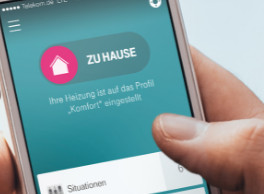
The smart home is set to be one of the most disruptive technology markets yet, but the biggest immediate battle is between the principles of open platforms versus proprietary. Although this may sound an esoteric debate, the decision has far reaching implications for the market…
Author: Thomas Rockman – Vice President Connected Home Deutsche Telekom
The open vs proprietary debate is as old as software itself, dating back to well before the Linux Foundation was formed. Interestingly the desktop and server side of the question looks to have been fairly decided of late, with Microsoft becoming a Platinum member of the Linux Foundation, but the smart home market has now become the focus of debate.
One of the greatest challenges facing companies seeking to enter the connected home market is the lack of common standards and architectures for connectivity. Today, many proprietary and incompatible wireless protocols exist, which is a major obstacle to mass market adoption of connected home services. Many companies in the early days of the smart home curve chose the proprietary route, often with speed to market in mind, rather than perhaps a more judicious goal of long-term interoperability.
In many ways this situation has been seen before. Although Wi-Fi existed in the early 80s it didn’t work particularly well, and it wasn’t until Intel created the Centrino Programme that the wider industry came to embrace interoperability and follow the same standard implementations. The result is that Wi-Fi has become almost entirely standardised, and it’s rare to encounter a network that won’t play nicely with a huge range of personal and business devices.
However, the lack of a standardised approach for the smart home has caused significant market fragmentation, which is proving damaging for incumbent businesses, challengers and consumers alike. At Deutsche Telekom we believe that the time has come for the smart home industry as a whole to collaborate to solve this challenge before the repercussions further damage the potential of this market.
There are many glowing predictions regarding the smart home, and the wider IoT industry, but a Gartner report predicted only last year that 21 billion IoT endpoints will be in use by 2020, which will save consumers and businesses $1 trillion a year in maintenance, services and consumables by 2022, according to the analyst firm. On the other side of the pond, Parks Associates research shows 19 per cent of US broadband households currently own a smart home device of some kind, and half of all households that own a security system also own a smart home device. The building blocks are there, even if they are too often in platform-related silos.
It was to help break down these silos that Deutsche Telekom launched its open connected home platform QIVICON in late 2013. Now available internationally as a white label solution, the platform supports the Eclipse SmartHome/openHAB initiative, and more than 40 partners use the platform, including eQ-3, Miele, Netatmo, Osram, Philips, , , KPN, Sonos and Vattenfall. With an open ecosystem, partners can play to their core strengths, benefit from multiple synergies, discover new routes to market, deepen consumers’ loyalty to their brand, and create new growth for their business.
This new growth will be based on innovation, and specifically new business models, of that we are certain, and the dynamic innovation required by the smart home is mainly found in open, collaborative, rather than proprietary platforms. Forming new partnerships and building fresh market strategies as well as engaging increasingly powerful developer communities will be critical. A good example here is the potential for telcos to create value-add service bundles in the context of the connected home. It is clear that the connected home is an ideal up-sell journey from phone, broadband and TV (quad play), or dual fuel energy tariffs. As the number of connected devices grows, establishing powerful interactions between them is likely to become a service sector of its own, relating to management, maintenance, assistance and on-site support.
It is time to come together and join forces, combine industry-specific knowhow and drive the connected home forward to realize new growth for everyone. In the long run, no company or brand can establish the connected home alone – those who think that they can will not succeed. We are convinced that kick-starting the market requires a ‘community effort’ that key players must work together to drive greater value for all. The key to future success will be to maintain an open, agile and flexible course, of that we can be certain…
For more information on Deutsche Telekom’s Connected Home platform, please visit: http://connectedhomeplatform.telekom.net







